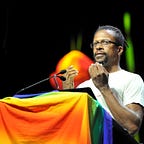Danger
Will we be in danger if we open?
Danger.
This word stuck with me in a recent meeting with congregational leaders. I think it resonated with me so deeply because of all the moral implications of church being a danger…even a Unitarian Universalist one.
As we discussed the prospect of re-opening as the coronavirus pandemic changes and as government leaders focus on economic solvency, the word came up in relation to who might be in danger by coming back to our space for worship.
Danger.
One of the toughest considerations in this conversation is trying to understand what it would mean to create a two tiered system of doing church where one group was able to attend in person because they were apparently healthy, non-immunocompromised, young, etc. and another group was not able to attend because they were none of the above, and/ or simply afraid. How long would that be sustainable? Who are the haves and have not’s in this situation? More importantly, what is the equitable solution?
The only concrete thing we really know about the coronavirus at this point is the number of people it has killed; and even that is in question due to underreporting and inconsistent tracking of data and causes of death. We do not know conclusively how it is transmitted, or how contagious it is. As of this writing, we do not know if one is immune to it after exposure and we don’t have 100% efficacy in testing either for anti-bodies or for the virus itself. There is no vaccine, no cure and only the most basic of therapeutics. There is the very real potential for everyone and anyone to get this disease which means we are all in danger.
Still, many religious institutions are having the conversation about what a “re-opening” strategy needs to look like. I will offer my insight as a spiritual and organizational leader and I will support my own congregation’s decision as a community regardless of my own personal opinions. It is my job. At the same time, I have to ask the question as part of any re-opening strategy: if our space represents a potential physical danger for some in this situation, why would we open for anyone?
And then there is the existential question about what are the ways in which our church (or any church for that matter) has represented “danger” before this pandemic? Do we need to find a vaccine for those viruses as well? How can we be sure that no one will be in danger culturally, spiritually, socially, emotionally?
In this moment, those of us with great safety and privilege in traditional church and religious settings, have an opportunity to experience a small portion of the literal danger that has prevented some people from coming into our spaces. Dangerous histories of slavery, genocide, erasure and silence. Dangerous messages of sin and punishment, dangerous rituals that reinforce sexism, disembodiment and fear. Dangerously conditional salvation.
The physical church space in limbo suspends the dangerously limited physical accessibility for some and alters the danger of the one-hour worship experience, in one dominant language, seated facing one direction for others. It eases the visible impact of the dangerous physical manifestation of ministerial power and presence as an extension of patriarchy and domination.
And what of dangerously narrow musical and worship styles? The dangers of appropriation of both music and ritual and the dangerous re purposing of sacred texts. How dangerous does the segregation of 11:00 a.m. on a Sunday morning look now when we see it from where we are today?
If by reopening, we are creating vectors for people to continue getting sick with a disease for which there is no cure or therapy, it does no one any good. And if the spiritual practices and traditions that we are trying to return to are equally toxic, we are only compounding the infection.
For me, this feels like a pivotal moment in liberal religious life. Our faith is being called to answer the most basic question of our very existence. Can we survive? Are we in danger?
It depends….
A truly liberal spiritual community is not open for anyone if it cannot truly be open for everyone.
Originally published at http://spirituwellness.org on May 14, 2020.
